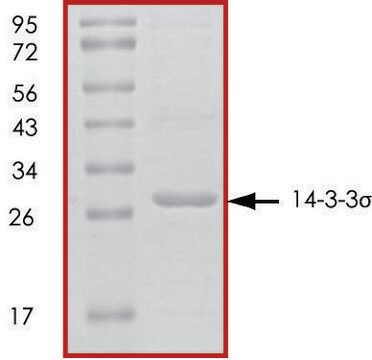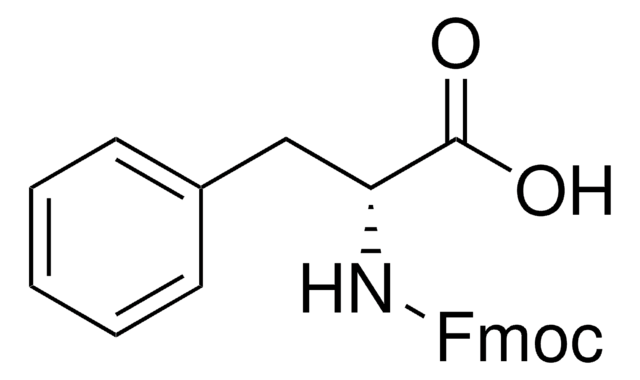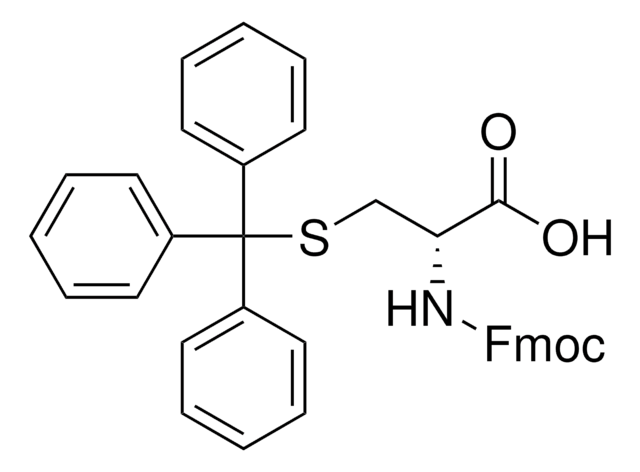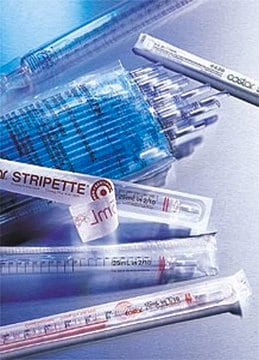SRP5159
14-3-3 σ , GST tagged human
recombinant, expressed in E. coli, ≥70% (SDS-PAGE), buffered aqueous glycerol solution
Synonym(s):
SFN, YWHAS, stratifin
Sign Into View Organizational & Contract Pricing
All Photos(1)
About This Item
Recommended Products
General description
14-3-3σ or stratifin is a protein that is strongly induced by gamma irradiation and other DNA-damaging agents. The induction of 14-3-3σ is mediated by a p53 responsive element. Exogenous introduction of 14-3-3σ into cycling cells results in a G2 cell cycle arrest. Knockout of 14-3-3σ in cells showed that the cells are unable to maintain cell cycle arrest after DNA damage. The 14-3-3σ -/- cells die as they enter mitosis. This process is associated with a failure of the 14-3-3σ -deficient cells to sequester the proteins that initiate mitosis and prevent them from entering the nucleus. Thus, 14-3-3σ plays an important role in maintaining the G2 checkpoint in cells and preventing mitotic death.
Physical form
Supplied in 50mM Tris-HCl, pH 7.5, 150mM NaCl, 10mM glutathione, 0.1mM EDTA, 0.25mM DTT, 0.1mM PMSF, 25% glycerol.
Preparation Note
after opening, aliquot into smaller quantities and store at -70 °C. Avoid repeating handling and multiple freeze/thaw cycles
Storage Class Code
10 - Combustible liquids
WGK
WGK 1
Choose from one of the most recent versions:
Certificates of Analysis (COA)
Lot/Batch Number
Don't see the Right Version?
If you require a particular version, you can look up a specific certificate by the Lot or Batch number.
Already Own This Product?
Find documentation for the products that you have recently purchased in the Document Library.
T A Chan et al.
Nature, 401(6753), 616-620 (1999-10-19)
14-3-3Sigma is a member of a family of proteins that regulate cellular activity by binding and sequestering phosphorylated proteins. It has been suggested that 14-3-3sigma promotes pre-mitotic cell-cycle arrest following DNA damage, and that its expression can be controlled by
H Hermeking et al.
Molecular cell, 1(1), 3-11 (1998-07-11)
Exposure of colorectal cancer (CRC) cells to ionizing radiation results in a cell-cycle arrest in G1 and G2. The G1 arrest is due to p53-mediated induction of the cyclin-dependent kinase inhibitor p21WAF1/CIP1/SDI1, but the basis for the G2 arrest is
Our team of scientists has experience in all areas of research including Life Science, Material Science, Chemical Synthesis, Chromatography, Analytical and many others.
Contact Technical Service








